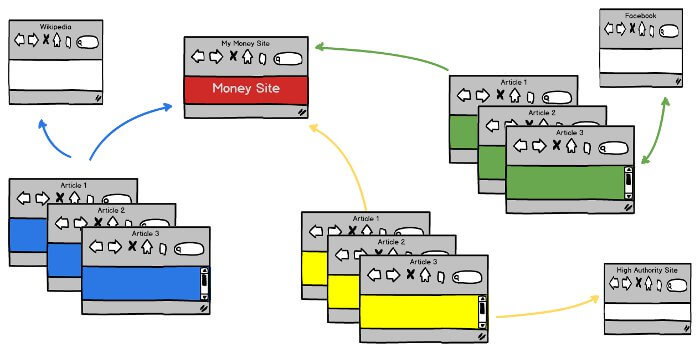All Categories
Featured
Table of Contents
- – What Is The Top Enhancing Seo With Semantics
- – What Is The Top What Is Semantic Seo Service?
- – What Is The Most Reliable Semantic Search Alg...
- – Who Is The Premier Semantic Seo Checklist Man...
- – What Is The Ideal Semantic Seo Analysis Serv...
- – What Is The Top Best Semantic Seo Tools Serv...
- – When Are Top Semantic Seo Ranking Factors Sa...
This is because search engines have actually advanced and are relocating more and much more in the direction of reviewing content on the internet. Of program, that has additionally altered the method we create web content, particularly if we want to rank far better in the search engines.
Intertwingularity is not generally acknowledged, people maintain pretending they can make points deeply ordered, categorizable and sequential when they can not. Based on the relationships between search purposes, the search engine likes a content in placing by determining the range in between the vectors of meaning.
It permits you to see, starting from a subject, all the entities that are associated to that topic. By doing this you can clearly see which entities/concepts/ideas have actually already been covered on your web site, and you can uncover brand-new chances by comprehending what content you can add and just how to create it.
What Is The Top Enhancing Seo With Semantics
It is able to make your web content reasonable for search engines on the one hand and for your target market on the various other. Structuring your content model highlights your material and its underlying relationships to make sure that search engines can identify you among thousands of items of info, making you extra visible to individuals that satisfy the search intent pertaining to your business.
In semantic search engine optimization copywriting, an editor begins from a wider variety of subjects and tailors the content to consist of semantically pertinent terms and expressions that aid visitors recognize a subject, comparable to reviewing content in a wiki. From a web content creating perspective, one useful method to do this is to create a vocabulary of terms and inquiries bordering your target topic.
What Is The Top What Is Semantic Seo Service?
Find out more regarding by viewing the by!.

Semantic search refers to the procedure of how online search engine understand and match keyword phrases to a searcher's intent in organic search engine result. Before semantic search, online search engine like Google ran like matchmakersaligning specific words in your question with those exact words on web pages. The outcomes were simple but usually lacked depth.
What Is The Most Reliable Semantic Search Algorithms To Get
It enables Google to provide quick, exact response to browse inquiries about real-world subjects. When you kind a query word into Google, you're not just getting in a series of words. You take advantage of an intricate internet of definitions and connections. Google's Understanding Graph sees these words as entities with context and relationships.
When you search for "Apple," Google does not simply see a word that explains a fruit. It identifies Apple as a firm and can give related info. It was Google's solution to the increase of voice searches, where queries ended up being a lot more conversational and nuanced.
Who Is The Premier Semantic Seo Checklist Manufacturer
By incorporating NLP, Hummingbird permitted Google to move beyond mere keyword matching. It assisted the online search engine comprehend search intent, boosting the chances that results would precisely match the reason behind an individual's search. As the third crucial ranking variable after material and links, RankBrain has boosted Google's semantic search capacities to comprehend the significance of search inquiries.
Making it more reliable at dealing with never-before-seen search queries. RankBrain considers even more than simply keywords when assessing a search query.
So it fetches results that match the keywords and align with the overall intent of giving puppy training suggestions. And if the user frequently looks for dog-related material, Google could focus on much more comprehensive training guidesrecognizing the individual's ongoing rate of interest in the topic. Incorporating technologies like the Knowledge Graph, Hummingbird, and RankBrain, semantic search aids the Google algorithm analyze and link information across a vast web of information.
What Is The Ideal Semantic Seo Analysis Service To Use
The focus shifts from keyword choice to a holistic strategy including customer intent, topical relevance, and general customer experience. Developing material that attends to the searcher's needs with thorough information can boost your SERP positions. Below, we outline the trends and techniques that consolidate the need for semantically notified web content. Later on, we offer workable pointers to transform these understandings into best techniques.
And type of web content can best please their requirements. A broader approach to content aligns much better with semantic search's change away from exact search phrase matching and toward user intent. Which clarifies the increased concentrate on subject clusters, rather than individual keyword phrases. Material that covers search inquiries better not only pleases individuals.
And 5 times greater than sites that take 10 seconds to tons. While technical SEO guarantees ideal website performance and accessibility, focusing on customer experience (UX) takes it a step further. UX aims to develop an aesthetically enticing, user-friendly user interface with interesting, quality content that motivates visitors to stay. Semantic search innovation makes it possible for internet search engine to intend for results that provide the most effective possible UX.
What Is The Top Best Semantic Seo Tools Service?

All display Google's capability to address a topic question comprehensively. By understanding the context and intent behind customer inquiries, internet search engine can deliver a lot more relevant details and potentially boost individual interaction. Customization in search engine result produces far better UX.Based on your previous search background and choices as a user, semantic search aids search engines tailor the results to match your one-of-a-kind needs and passions.
It fetches results that match the keywords and straighten with the overall intent of supplying puppy training recommendations. And if the user often looks for dog-related web content, Google might prioritize more thorough training guidesrecognizing the individual's recurring rate of interest in the topic. Incorporating technologies like the Expertise Graph, Hummingbird, and RankBrain, semantic search helps the Google formula analyze and connect data throughout a substantial web of info.
When Are Top Semantic Seo Ranking Factors Sales
The emphasis shifts from keyword selection to a holistic method incorporating customer intent, topical significance, and total individual experience. Producing content that addresses the searcher's requirements with detailed details can enhance your SERP rankings. Listed below, we outline the trends and techniques that settle the need for semantically informed web content. Later, we give workable ideas to transform these insights right into finest practices.

And type of content can best please their demands. A more comprehensive approach to content aligns much better with semantic search's shift away from specific keyword matching and towards customer intent. Which describes the raised focus on subject clusters, instead than individual search phrases. Web content that covers search queries better not only pleases users.
UX aims to produce a visually attractive, easy to use user interface with engaging, top quality material that motivates visitors to remain. Semantic search innovation makes it possible for search engines to intend for outcomes that give the finest feasible UX.
All showcase Google's capability to deal with a subject inquiry comprehensively. By comprehending the context and intent behind user questions, online search engine can provide a lot more appropriate details and potentially raise user involvement. Customization in search results produces far better UX.Based on your past search background and choices as an individual, semantic search helps browse engines tailor the results to fit your one-of-a-kind requirements and interests.
Table of Contents
- – What Is The Top Enhancing Seo With Semantics
- – What Is The Top What Is Semantic Seo Service?
- – What Is The Most Reliable Semantic Search Alg...
- – Who Is The Premier Semantic Seo Checklist Man...
- – What Is The Ideal Semantic Seo Analysis Serv...
- – What Is The Top Best Semantic Seo Tools Serv...
- – When Are Top Semantic Seo Ranking Factors Sa...
Latest Posts
What Is The Most Affordable Optimizing For Semantic Search Deal
What Is The Premier Implementing Semantic Seo Company?
Which Is The Leading Semantic Content Optimization Company
More
Latest Posts
What Is The Most Affordable Optimizing For Semantic Search Deal
What Is The Premier Implementing Semantic Seo Company?
Which Is The Leading Semantic Content Optimization Company